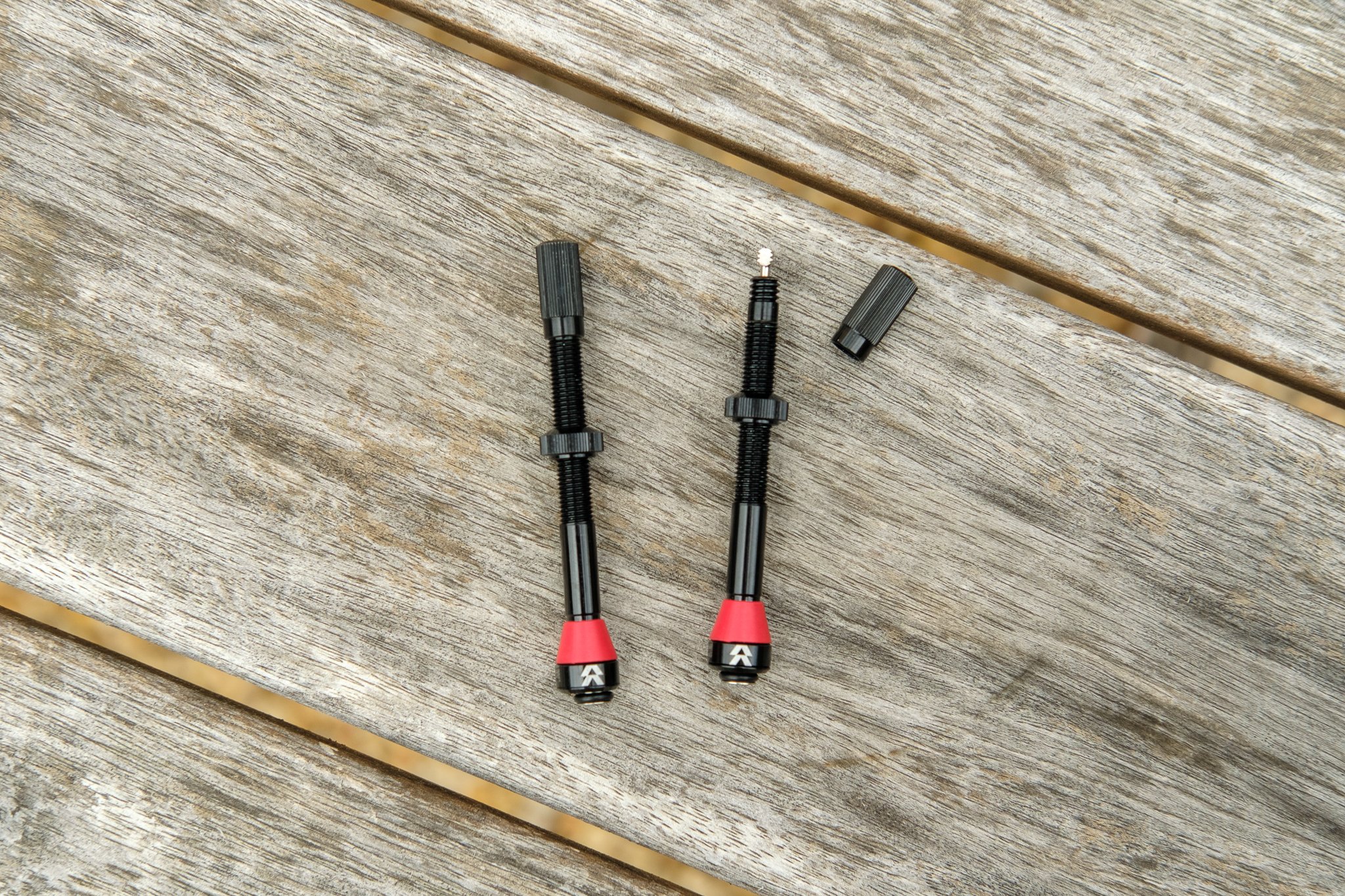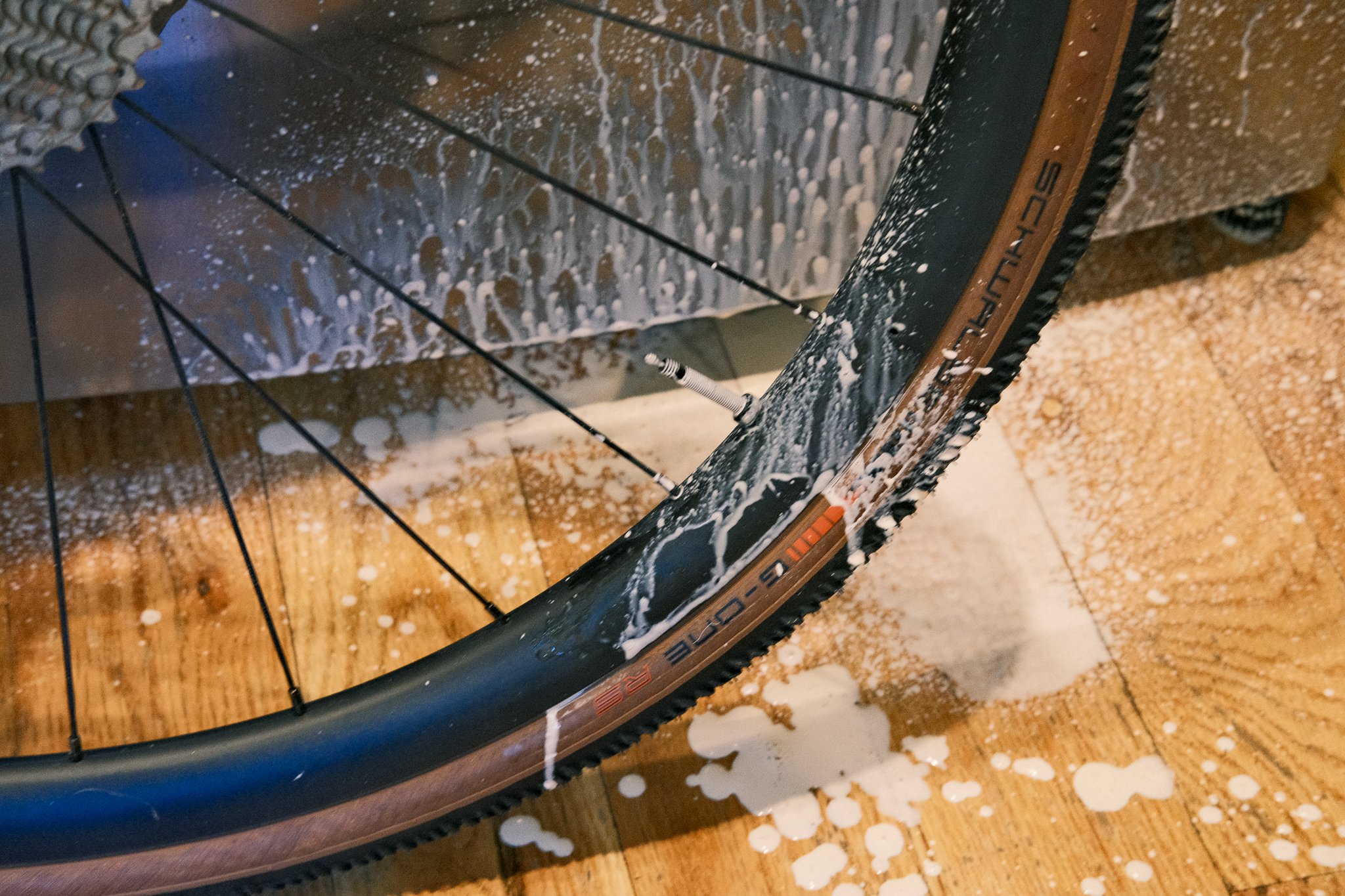Tire Tech Tuesday: Reserve Fillmore Tubeless Valves
Have the recent leaps in tire technology got you feeling both excited and overwhelmed? Do you have a secret teenage past of riding 20mm road tires inflated to 120 PSI? Or, are you just looking for a place to throw your hard-earned dollars in hopes of unlocking a better riding experience and an advantage over the competition?
If you answered “yes” to any of the above, then you’ve found the right corner of the internet. Welcome to the first edition of Tire Tech Tuesday, where I’ll be waxing poetic about the many updates in modern bicycle tire technology. This week I’m reflecting on my year spent riding Reserve’s Fillmore valves for tubeless tires.
How did I get here?
First, a confession: I hadn’t thought about about tubeless valves very much until 2023. If you consider my riding habits, that’s a little strange.
I ride tubeless for nearly every application, with the only exception being the humble “outdoor cat” of a bicycle that I use to ride to the barber and occasionally to social engagements. Every other time I ride a bike, I’m checking and adjusting the pressure of a tubeless tire before rolling out the front door.
Despite my near-daily use of tubeless tech, the valves had remained an unexciting piece of technology to me. I viewed them as a device that would have no noticeable impact on my riding experience, no matter how much or how little I’d spent.
Then I started doing long and stupid rides again. More on that at a later date, but I was often finding myself alone in remote places on said long/stupid rides. Reflecting on these moments, I began to think more about the repairability of my bicycle and the tools I chose to carry with me. I started to wonder what would finally leave me walking hours to the Metro North with a broken bike.
At some point I decided that there was a chance I’d accidentally unscrew a tubeless valve core with my screw-on hand pump. Naturally I’d lose the valve core in this scenario. I believe I inherited this penchant for worrying from my mother, and I also believe it to be incurable.
I was convinced that someone had identified a solution to this problem. I opened Instagram, saw a post about Fillmore valves, and started entering my credit card information.
Could I learn to have feelings about a tubeless valve?
E-commerce is a modern miracle and I had my new valves in less than a week.
Oh. And I bought three pairs of them. If you’re doing the math, that’s about $150 in tubeless valves. I wanted all my wheels to match and I had a free shipping threshold to meet. Also, I just really like shopping on the internet.
As a reminder, I spent this money to fix a problem I’d never actually had before. I’d been using Lezyne pumps that screw onto valves for nearly 10 years and had never inadvertently unscrewed a valve core. But, Reserve’s Fillmore had promised to solve many more problems. The design was intriguing and the accompanying hype was substantial. I was eager to see if the claims were true, and you may be disappointed to read that I now believe the hype.
The Fillmore’s core uses a “poppet” design that’s not removable (unlike a typical tubeless valve), and supports a significantly higher rate of air flow through the valve. Much has been said about this design, and you can learn more about how it has 3X the airflow of a presta valve in this video. Instead of focusing on the valve’s specifications, I wanted to share how they held up to regular use.
So, once it was warm enough for me head outside and faff about with some tubeless sealant, I set to work installing the valves.
A conventional (and now clogged) tubeless valve ready for retirement.
A Reserve Fillmore valve ready to prove itself.
Installation was easy and drama-free.
I’ve since ridden them in all kinds of applications for a year and had expected to arrive at a conclusion like, “The Fillmore is a nice bit of kit, but I still can’t justify spending $50 on a tubeless valve.” Instead I have to simply admit that they’ve exceeded my expectations. Not only do I not have to worry about losing valve cores, the benefits of a high-flow valve that doesn’t clog are real.
I no longer deal with sluggish and sticky valves when inflating tires, and I never have to pick old sealant out of a valve when replacing a tire or sealant. I’ve yet to see a Fillmore clog, and can seat tires of all kinds with just a floor pump. My Airshot tire inflator has been gathering dust in the closet.
They also play nicely with everything I’ve thrown at them. Inserts are not an issue, and using a digital gauge is still a piece of cake. I’ve since bought a fourth pair and put them on my mountain bike. They work beautifully.
Tips, tricks, and Reserve’s Lifetime guarantee
After living with the Reserve Fillmores on four different wheelsets I’ve learned two valuable and embarrassing lessons:
1. When adding fresh sealant through the Fillmore valve, the tire must be deflated. Completely deflated.
Sometimes I am a lazy man and do not wish to unseat the tire bead to add new sealant. The Reserve Fillmore will gladly facilitate this laziness and permit you to carelessly blast fresh sealant through the valve and into your tire. But, you must first deflate the tire.
Having air pressure in the tire will prevent the “poppet” in the valve from opening to let sealant pass through. When the sealant cannot pass through the valve, it may choose to go elsewhere. This may result in a large mess of sealant in your tiny New York City kitchen. You may swear loudly. Your neighbors may wake to the sounds of swearing through your thin apartment walls. Your dog may try to eat the sealant and you’ll have to scramble to clean it up with haste.
Please deflate your tire before attempting to add sealant through the valve.
2. Reserve’s Lifetime Guarantee is actually pretty great.
Last summer I was riding in the rain and got a puncture. I attempted to use a mini pump to add air to the tire and ended up destroying a Fillmore valve. It was my fault: My wrist was weak after healing from a fracture earlier in the year. The pump was slippery in the rain. I cross-threaded it onto the valve. The valve broke off in the pump.
I sent Reserve a confusing and embarrassing photo of my self-inflicted misery. They sent me a new pair of Fillmores. They didn’t even charge me for shipping.
You can expect this result if you attempt to add sealant through the valve of an inflated tire. (Not pictured: Swearing.)
My hamfisted foolishness destroyed 1 Fillmore. I promise that my roadside repairs are usually more successful than this.
The bottom line
Do I like them?
Yes. Very much. I’d buy them again. I recently bought some new wheels and made sure to order a pair of Reserve Fillmores for them.
Are they perfect?
Nothing in this world is perfect except for Mathieu Van der Poel’s phenomenal comeback in the 2019 edition of Amstel Gold.
My only nitpick with these valves is their removable caps. They seem too easy to lose.
The Fillmore’s cap plays a more critical role than that of a presta valve. Tightening it will lock the Fillmore’s “poppet” in the closed position, which prevents air from flowing through the valve. If the cap is lost, the “poppet” is exposed to the elements. In the event that something were to hit the “poppet,” it could be damaged or just let a whole lotta air out of your tire.
While it’s possible to ride without the cap, as the air pressure inside the tire should prevent the “poppet” from opening, doing so feels precarious. I’m happy to keep an extra cap in my saddle bag or riding wallet, but it’d be nice to see Reserve find a way to make it more difficult to lose.
Want to see something specific in the next edition of Tire Tech Tuesday? Please leave a comment or send us a DM!
Note: Tire Tech Tuesday is not a weekly affair (and you should be grateful for that). See you in a few weeks.






